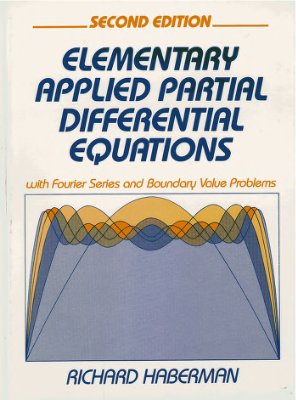Prentice Hall, 1987. - 532 p.
This text discusses elementary partial differential equations in the engineering and physical sciences. It is suited for courses whose titles include Fourier series, orthogonal functions, or boundary value problems. It may also be used in courses on Green's functions or transform methods.
Simple models (heat flow, vibrating strings and membranes) are emphasized. Equations are formulated carefully from physical principles, motivating most mathematical topics. Solution techniques are developed patiently. Mathematical results frequently are given physical interpretations. Proofs of theorems (if given at all) are presented after explanations based on illustrative examples. Numerous exercises of varying difficulty form an essential part of this text. Answers are provided for those exercises marked with a star (*).
Standard topics such as the method of separation of variables, Fourier series, and orthogonal functions are developed with considerable detail. In addition, there is a variety of clearly presented topics, such as differentiation and integration of Fourier series, zeros of Sturm-Liouville eigenfunctions, Rayleigh quotient, multidimensional eigenvalue problems, Bessel functions for a vibrating circular membrane, eigenfunction expansions for nonhomogeneous problems, Green's functions, Fourier and Laplace transform solutions, method of characteristics, and numerical methods. Some optional advanced material of interest is also included (for example, asymptotic expansion of large eigenvalues, calculation of perturbed frequencies using the Fredholm alteative, and the dynamics of shock waves).
The text has evolved from the author's experiences teaching this material to different types of students at various institutions
This text discusses elementary partial differential equations in the engineering and physical sciences. It is suited for courses whose titles include Fourier series, orthogonal functions, or boundary value problems. It may also be used in courses on Green's functions or transform methods.
Simple models (heat flow, vibrating strings and membranes) are emphasized. Equations are formulated carefully from physical principles, motivating most mathematical topics. Solution techniques are developed patiently. Mathematical results frequently are given physical interpretations. Proofs of theorems (if given at all) are presented after explanations based on illustrative examples. Numerous exercises of varying difficulty form an essential part of this text. Answers are provided for those exercises marked with a star (*).
Standard topics such as the method of separation of variables, Fourier series, and orthogonal functions are developed with considerable detail. In addition, there is a variety of clearly presented topics, such as differentiation and integration of Fourier series, zeros of Sturm-Liouville eigenfunctions, Rayleigh quotient, multidimensional eigenvalue problems, Bessel functions for a vibrating circular membrane, eigenfunction expansions for nonhomogeneous problems, Green's functions, Fourier and Laplace transform solutions, method of characteristics, and numerical methods. Some optional advanced material of interest is also included (for example, asymptotic expansion of large eigenvalues, calculation of perturbed frequencies using the Fredholm alteative, and the dynamics of shock waves).
The text has evolved from the author's experiences teaching this material to different types of students at various institutions

